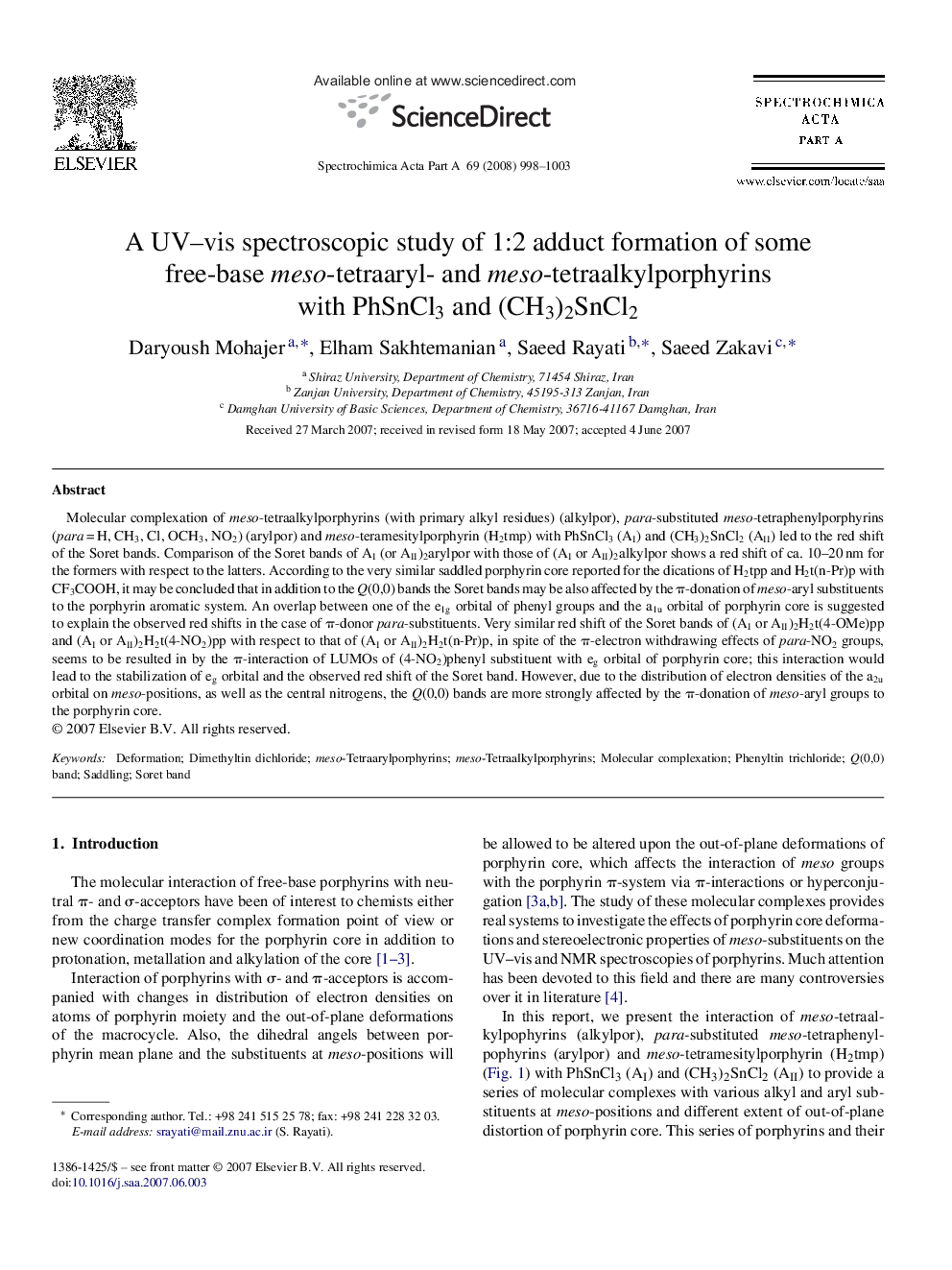| Article ID | Journal | Published Year | Pages | File Type |
|---|---|---|---|---|
| 1234628 | Spectrochimica Acta Part A: Molecular and Biomolecular Spectroscopy | 2008 | 6 Pages |
Molecular complexation of meso-tetraalkylporphyrins (with primary alkyl residues) (alkylpor), para-substituted meso-tetraphenylporphyrins (para = H, CH3, Cl, OCH3, NO2) (arylpor) and meso-teramesitylporphyrin (H2tmp) with PhSnCl3 (AI) and (CH3)2SnCl2 (AII) led to the red shift of the Soret bands. Comparison of the Soret bands of AI (or AII)2arylpor with those of (AI or AII)2alkylpor shows a red shift of ca. 10–20 nm for the formers with respect to the latters. According to the very similar saddled porphyrin core reported for the dications of H2tpp and H2t(n-Pr)p with CF3COOH, it may be concluded that in addition to the Q(0,0) bands the Soret bands may be also affected by the π-donation of meso-aryl substituents to the porphyrin aromatic system. An overlap between one of the e1g orbital of phenyl groups and the a1u orbital of porphyrin core is suggested to explain the observed red shifts in the case of π-donor para-substituents. Very similar red shift of the Soret bands of (AI or AII)2H2t(4-OMe)pp and (AI or AII)2H2t(4-NO2)pp with respect to that of (AI or AII)2H2t(n-Pr)p, in spite of the π-electron withdrawing effects of para-NO2 groups, seems to be resulted in by the π-interaction of LUMOs of (4-NO2)phenyl substituent with eg orbital of porphyrin core; this interaction would lead to the stabilization of eg orbital and the observed red shift of the Soret band. However, due to the distribution of electron densities of the a2u orbital on meso-positions, as well as the central nitrogens, the Q(0,0) bands are more strongly affected by the π-donation of meso-aryl groups to the porphyrin core.
